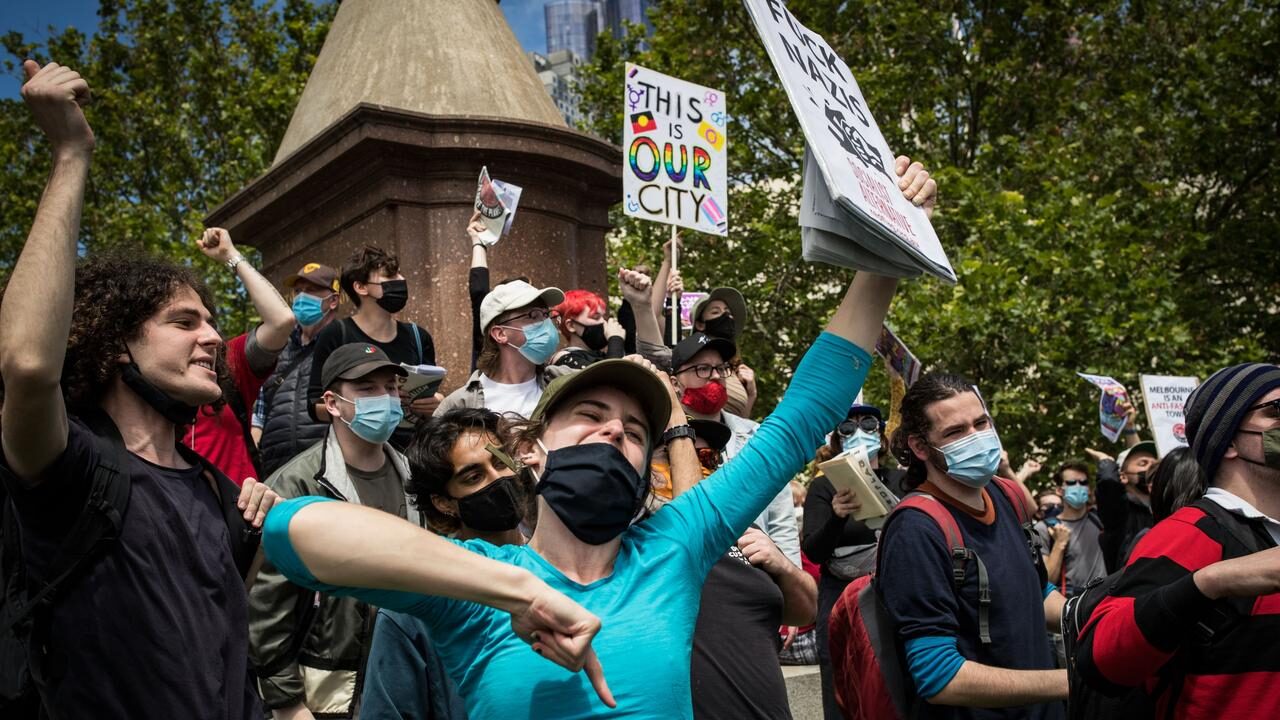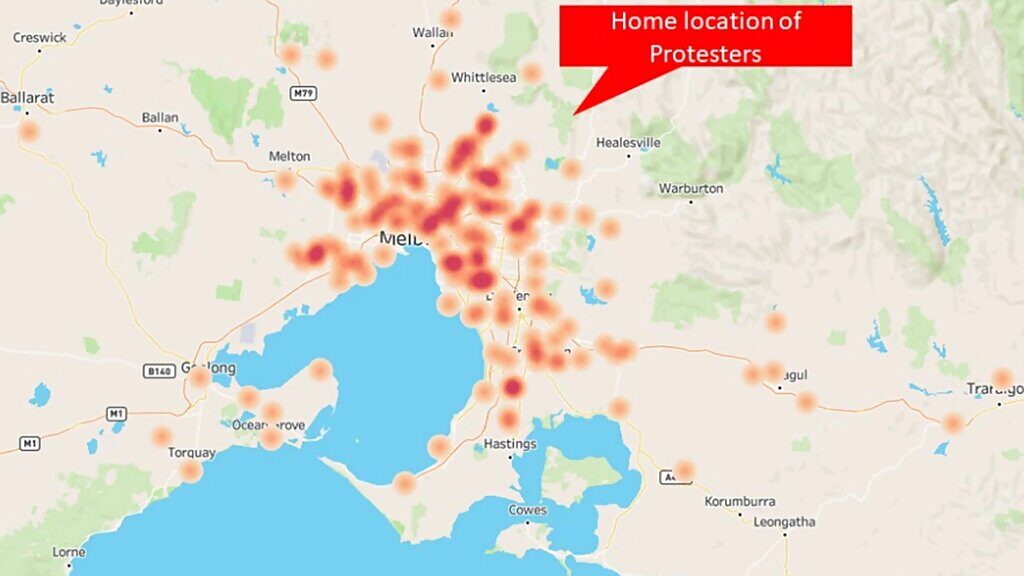
Staggering new data has pinpointed exactly where Melbourne's "freedom" protesters hail from, with many found to be everyday Australians who have battled through consistent lockdowns and struggled to make ends meet.
Australian research company Roy Morgan released the data on Wednesday after monitoring and then analysing who attended Melbourne's anti-government protest outside Parliament House on November 20.

Data from devices such as mobile phones found in the area on the day was compiled into a heat map to determine where protesters had come from and what type of Australians they were.
Roy Morgan chief executive Michele Levine said demonstrators came from "far and wide" to assemble in the city.
"The 'Heat Map' shows the heaviest concentrations of protesters were from outer suburban areas of Melbourne such as South Morang, Tarneit, Cranbourne, Langwarrin, Werribee and Caroline Springs - although there were protest attendees from all over Melbourne," Ms Levine said.
"There were also protesters in the Melbourne CBD who came from as far afield as Ballarat, Geelong, Ocean Grove, Torquay, Wallan, Warragul, Hastings, Traralgon, Wonthaggi and elsewhere."
Tens of thousands of people gathered in Melbourne's CBD on the day to protest the state government's pandemic bill, flocking to the steps of parliament before marching through the city.
Protesters chanted "Sack Dan Andrews", "Save Victoria" and "Kill the Bill" as they shut down CBD traffic and public transport.
The demographic of those within the crowds has largely been unknown until now, but further analysis from Roy Morgan has suggested those who attended included average Australians as well as those who were struggling.
The research revealed the largest demographic, around 30 per cent of protesters, were people focused on success, career and family, who were naturally big spenders and enjoyed "cultured living".
However, communities that were overrepresented included people who embraced a conventional family life, as well as those who were further down the socio-economic ladder and struggling to make ends meet.
"It should perhaps not be a surprise that those already facing a struggle to make ends meet and get ahead in life are out on the streets protesting Government vaccine mandates," Ms Levine said.
"They tend to be cynical about the motives of authority figures generally and have likely been hit hard by the restrictions imposed by the pandemic.
"The 'average Australians' represented have also been hit hard by the pandemic. Businesses in the retail, recreational and personal, in which many of this cohort are employed, have been forced to close and put under severe restrictions for the last 18 months - and the new pandemic legislation and vaccine mandates suggests they might have to get used to these restrictions rather than returning to a pre-Covid normality.
A special Roy Morgan SMS Poll conducted last week showed 63.5 per cent of Victorians approved of the way Premier Daniel Andrews was handling his job as Premier, compared to only 36.5 per cent that disapprove, while over three-quarters of Victorians agreed that an employed worker should not be able to enter their employer's workplace unless they're fully vaccinated.
"These figures are very stark and stand in solid opposition to the views put forward by the protesters on the streets of Melbourne over the last few weeks," Ms Levine said.
Rhiannon Tuffield is part of the the News.com.au Editorial Team.



Comment: Still punting the propaganda at the end, citing what is likely a weighted poll. The whole article seems to have a faint whiff of condescension towards those 'further down the socio-economic ladder'. The plebes just don't know what is good for them, right? Fortunately, those plebes, don't care. They are still coming out in droves:
This is what they are rightfully terrified of: